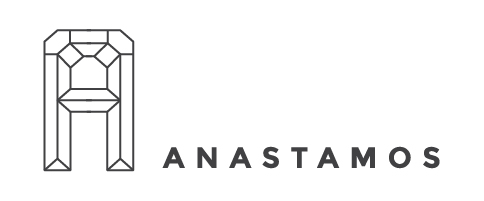Letter From The Editor: The Fluidity of Learning
Alison Williams
Dear Reader,
The creation of Anastamos’ second issue has come over a period of time that has been distinctive, not only in a social and historical perspective, but for myself personally. In addition to the monster storms that have wracked our country environmentally, as well as culturally and politically, I have been weathering the ups and downs that come from tackling two theses in one semester and teaching a university-level class for the first time, and the anticipation of what-comes-next after graduation.
I’m not complaining. (Well, maybe a little.) But although it is undeniably exhausting waking up every morning with the feeling of impending disaster, the benefit of such a time is the potential for exponential growth and woke-ness on a large scale.
How does this relate to fluidity? This semester, along with seven other students, I had the opportunity to teach a first-year composition course here at Chapman. As instructors of record, we created our syllabi, implemented the curriculum, and performed all the grading. In conjunction with this experience, Chapman required us to take a class on teaching composition, an invaluable course that focuses on writing pedagogy and professional development.
A locus of the class revolved around idea of threshold concepts. Introduced by economists Erik Meyer and Ray Land in 2003, in threshold concepts, learning is achieved by students passing through “thresholds” of knowledge which may be difficult to initially grasp, but which fundamentally alter a way of thinking and being in the world.
“A threshold concept can be considered as akin to a portal, opening up a new and previously inaccessible way of thinking about something. It represents a transformed way of understanding, or interpreting, or viewing something without which the learner cannot progress. As a consequence of comprehending a threshold concept there may thus be a transformed internal view of subject matter, subject landscape, or even world view. This transformation may be sudden or it may be protracted over a considerable period of time, with the transition to understanding proving troublesome.” [1]
One of the most important elements of the threshold concept is the interaction with troublesome knowledge, which can be defined “as ‘that which appears counter-intuitive, alien (emanating from another culture or discourse), or seemingly incoherent’.”[2] Yet it is only through the struggle with this “alien” knowledge that a student crosses the threshold into another way of knowing, which ultimately “are assimilated into our biography, becoming part of who we are, how we see, and how we feel.” [3]
Curiously, as I was devising my concepts for this letter, I realized that I had previously referenced this idea of troublesome knowledge in my editor’s letter for the first issue. [4] In that letter, I referenced troublesome knowledge in regard to the struggles that educators in the SoTL (Scholarship of Teaching and Learning) movement described in a workshop focused on interdisciplinary learning. In this letter, I reference troublesome knowledge through the threshold concept. I find it interesting that of all the subjects and concepts I could have chosen to focus on for my second letter, the one that most resonated happened to engage with the idea of troublesome knowledge. I think this is because I believe deeply in the transformative nature and power of learning. As educators – and as students – transformation is what we should be seeking in our classrooms and in our scholarship. Yet there is no transformation without that struggle with troublesome knowledge.
To me, this speaks directly to the idea of the fluidity of learning, and to the struggles I referred to in the beginning of this piece. It also speaks to the process of creating this journal.
One of the exciting parts about themed issues is that although you can project what work you think might come in, it is not possible to truly predict it. In this way, as editor, I can see what my own preconceived ideas are around a particular subject, regardless of how objective I think I may be. This part of journal editing – the anticipation and then the actualization of constructing an issue around a theme – is a bit like my own personal bias test around what I think I know, and what surprises me about how little I actually do. This is another exciting facet of working on an interdisciplinary journal, and how working on this journal continues to deepen my commitment to interdisciplinary work in my own scholarship.
The actions and collaborations that this journal requires produce as final result a publication (and one of quality, we hope!), but at its core my perspective from the start was to regard it as an experimental location of graduate inquiry for myself and the editorial team. From the founding of the journal through the publication of these first two issues and the preparations for the publication of the third, I have encountered many threshold concepts, which have fundamentally transformed core ideas around academia, interdisciplinarity, writing, publication, and knowledge.
The process of creating the journal, from concept to submission filtering to outreach through final iteration, is done by students who, at each step, are encountering decision-making that challenges their creative and intellectual scholarship. This kind of collaborative decision-making is a fluid act of learning which differs from a classroom environment in that it results in choices that have a direct effect on other people (the submitters), and the result of which is directed to an audience that is out of their immediate purview or control (rather than the audience of the classroom, which is firstly that of their professor, and secondarily that of their peers in the classroom). This requires a leap of faith and confidence, over a threshold from a space of implied privacy and singularity, to a space of public discourse and viewership.
This transitional thinking from the privacy of the classroom “audience” to the vulnerability of the public gaze is a crucial one for graduate students, and one that Anastamos is actively engaged in helping to foster, by providing editorial roles for Chapman students as well as a space for them to publish. I am pleased that we have included multiple pieces by Chapman faculty and students, as well as work from diverse individuals around the world.
I would like to thank all of our editors and contributors who manifested this latest issue. I would like to add an extra special note of thanks to Matthew Wheatley, a founding editor and our former Managing Director who has continued as a creative and technical consultant even after graduation. We wish him continued success in his next life phase, and eternal gratitude for his commitment and expertise.
I look forward to continuing on the Anastamos mission of crossing thresholds in our search for innovative work that reflects on our ever-changing global reality.
Warmly,
Alison Williams
Editor-in-Chief
[1] Meyer J H F and Land R 2003 ‘Threshold Concepts and Troublesome Knowledge 1 – Linkages to Ways of Thinking and Practising’ in Improving Student Learning – Ten Years On. C.Rust (Ed), OCSLD, Oxford
[2] Cousin, Glynis. “An introduction to threshold concepts.” Planet No. 17, December 2006. https://www.ee.ucl.ac.uk/~mflanaga/Cousin%20Planet%2017.pdf
[3] Cousin, Glynis. As above.
[4] Williams, Alison. “Letter From The Editor: Fear And The Issue.” Anastamos, Issue I: Fear, Spring 2017. https://anastamos.chapman.edu/index.php/portfolio-item/letter-from-the-editor-fear-and-the-issue/


No Comments